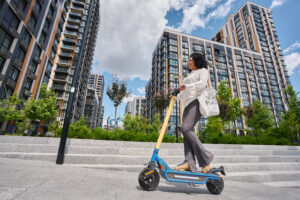There’s no arguing that nursing homes are necessary in the context of modern life in the United States. As the average American works more and more hours, caring for an elderly parent or grandparent can sometimes be simply too much of a burden on the day-to-day operations of a family.
That makes it all the more distressing to learn how common elder abuse is across American nursing homes. In this context, elder abuse refers to situations where official caretakers and staff at a nursing home cause harm to the patients under their care, whether intentionally or by accident.
This article will explore all the relevant facts and some key statistics you should be aware of when it comes to nursing home abuse and your legal rights in Illinois. Knowing this information can help you protect your loved one in a nursing home.
Nursing Home Abuse: Basic Facts
Causes of Abuse
We mentioned that this form of abuse comes in the form of harm done to nursing home residents by their staff or caregivers, and there are a few common reasons why nursing home staff may cause their elderly residents harm, whether intentionally or unintentionally.
- Improperly trained or otherwise unfit staff members
- Issues of understaffing duties and responsibilities or poorly implemented policies and procedures for patient care
- High employee turnover
- Employee burnout
Every category has its examples of both intentional and accidental harm. Staff who are either poorly trained or not trained at all are likely to make mistakes with serious health consequences. On the other hand, negligent or desperate hiring practices can lead to cruel, uncaring, or openly abusive individuals getting jobs as caregivers.
On the other hand, even well-trained, professional staff and clinicians can be guilty of abuse when they are overworked without enough reliable coworkers to support them. Exhausted workers pushed to their limits will make mistakes, and when under a lot of stress and anxiety, it can be easy to vent frustrations on innocent residents.
Who’s Most at Risk?
Unfortunately, the most vulnerable demographics are the most at risk for abuse in a nursing home.
- Women make up two-thirds of all nursing home abuse cases.
- Veterans, usually requiring more complex and attentive care than non-veterans, are often victims of abuse.
- Elders with poor mental health are frequently less able to advocate for themselves and are also likely targets.
- Members of the LGBTQ+ community are more likely to be singled out or targeted for unwanted attention or neglect.
Forms of Elder Abuse
Elder abuse comes in many forms.
- Emotional abuse is the most common form of abuse in today’s nursing homes. When patients are cared for physically but are manipulated, threatened, or regularly insulted, the nursing home becomes a hostile place that offers no rest.
- Physical abuse generally comes in the form of being struck or unnecessarily restrained against a patient’s will.
- Neglect refers to cases where patients don’t receive the care that they are supposed to receive. Unlike physical abuse, which is almost always intentional, neglect is more often the result of accidents caused by understaffed or overworked facilities.
- Financial abuse refers to cases where elders are exploited financially or outright have their money stolen by staff.
- Sexual abuse is also, unfortunately, a relevant form of elder abuse. Although it makes up less than 5% of nursing home abuse cases, it’s deeply serious and traumatic for anyone who does encounter it.
Surprising Statistics About Nursing Home Abuse
Let’s look at a few more rather shocking statistics related to abuse in nursing homes.
High Self-Reporting
These statistics show that a shocking two-thirds of staff admitted to abusing a patient at some point, and around 85% of all nursing homes have reported cases of abuse.
COVID Made Abuse Worse
One study suggests a staggering 83% increase in nursing home abuse during the COVID pandemic, going from 1 in 10 elderly adults to 1 in 5 during the height of lockdown. This makes sense since social distancing is nearly impossible in a nursing home, and older adults are more at risk of COVID. However, it’s a grim statistic all the same.
It May Be Even Worse
As many cases or instances are reported or counted in studies, there are many cases that are not reported. The elderly can face retaliation for reporting abuse or may lack the means to do so, making it likely that there are even more cases than we are officially aware of.
Turn to Pullano & Siporin if Your Loved One is a Victim of Nursing Home Abuse
If you have a loved one who currently lives in a nursing home or will likely need to soon, it’s vital to be prepared and alert for the possibility of abuse. If you suspect that abuse may be occurring, if a loved one has told you about being abused, or if cases of abuse have been reported at your nursing home in the past, it’s time to take quick legal action and find high-quality legal representation.
At Pullano and Siporin, we are experts in personal injury and medical malpractice cases, and nursing home abuse is one of the specialties we’ve developed in our decades of legal experience. Contact us today to find out how we can help spot abuse, put a stop to it, and take the next legal steps.







